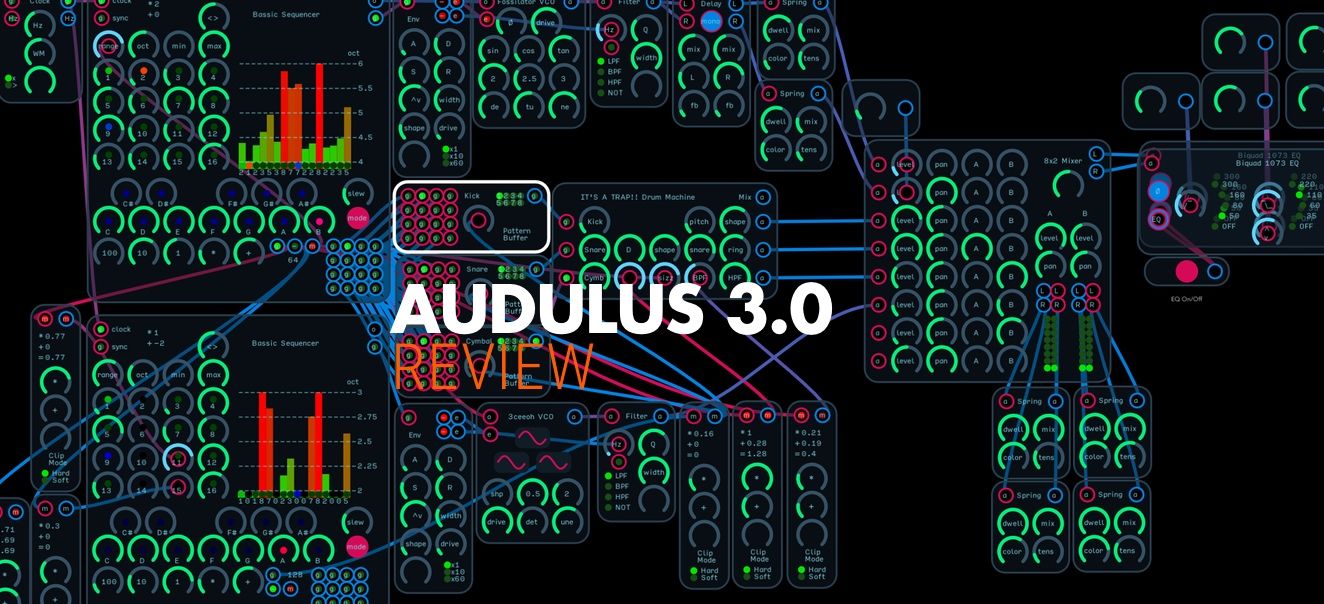Audulus is a member of Vimeo, the home for high quality videos and the people who love them. Audulus is a modular music processing app with unequaled ease of use. Also available for Mac Apple and the Apple logo are trademarks of Apple Inc., registered in the U.S. And other countries.

I don’t use much synthesizer software. But, upon seeing a demonstration of Audulus by Mark Boyd at a local synth club meeting, and then checking out the price ($50 US), I decided to get it. I was attracted by its ability to create modules out of primitives, called Nodes. Immediately I wanted to make a simulation of the Quantussy oscillator cluster from the Cocoquantus. It turned out that I could, although it took a bit of work. Here’s the UI. Drivers byon laptops & desktops.
My Audulus Quantussy module resembles the one in the Cocoquantus. It has five oscillators and ten sample & holds. The oscillators each drive two S&H nodes internally, one to sample its own CV input and one to sample an external CV input, which is passed as an output. t1-t5 are the triangle outputs and c1-c5 are the ‘castle’ sample and hold outputs. The five oscillators are connected in a ring, just like the quantussy with all green LEDs on, the start up state of Cocoquantus. Each oscillator also has three ranges, cycled through by a push button on the UI. There is a common Rate knob and a Chaos knob, which sets the level of cross modulation for all five oscillators.
To make a module in Audulus, you create a ‘sub-patch’, which can be any collection of nodes or other sub-patches. It is quite easy to place nodes and connect their inputs and outputs. For Quantussy I needed a custom oscillator with three ranges, and triangle and square outputs. To make it, I started with a Basic LFO that comes with Audulus and edited it. I also created another sub-patch module, I called Range, to let me select between 30, 300, and 3000 Hz as the high frequency. Oscillators in Audulus have a frequency control input that is just the number in Hz you want. The equivalent of CV in Audulus is a number between 0.0 and 1.0. So I needed to translate that CV input into a range of 0-30, 0-300, and 0-3000. This is pretty easy, using the Math function. Functions make up a lot of Audulus functionality. For example the equivalent of a VCA is just multiplication of two numbers. Here’s the UI of my LFO. Drivers cmd hard disk controller.
Audulus Windows
It’s basically an LFO with a range input, coupled to a trigger button. The button is external, so that it can be exposed when using in a sub-patch. This LFO also has saw and sine wave outputs, which I didn’t use for the Quantussy.
The next image shows the internals of the LFO Quant. It is the LFO plus two Sample & Hold nodes, both clocked by the square wave, but only one being exposed. The other samples the FM input.
Now comes the internal details of the Quantussy, which has five LFO-Quant sub-patches. Notice the master Freq and Chaos knobs in the center. Also notice the indicator lights associated with the ten outputs. The UI allows the light to be positioned in the center of the ‘jack’ it monitors, but that is up to the designer.
To test this out I needed some kind of audio patch. Audulus has loads of audio modules and effects that I’ve only just begun to explore. I picked a VCO called Fossilator, which has a whole bunch of knobs. A really cool feature is that a knob can be controlled by a 0-1 number input, making it simple to hook some of the Quantussy outputs to Fossilator knobs. I routed Fossilator’s one output through two different effects, a analog delay for one channel and a reverb for the other channel. I also have Quantussy controlling the levels of the two channels. After playing with this for a while, I settled on relatively slow Quantussy changes. I also gave a negative offset to the CV controlling the pitch, to lower the base octave.
Audulus Au
One very interesting feature of an Audulus patch is that it will start off playing in the exact state in which it was saved. So, very much unlike the analog Quantussy, I think that the sequence of events created by the software Quantussy may be able to repeat exactly. It is so deterministic that it will generate the same sequences of number again, like a seeded random number generator. But, do not mistake this for randomness. Quantussy does not use any random numbers. Patterns evolve via complex cross modulations of the LFOs.
Aldous Huxley
Here are two postcard recordings. These are self-running! No manual adjustments during recording. The second one continues from where the first left off.
https://pugix.com/synth/wp-content/uploads/2017/03/audulus-quantussy-5.mp3https://pugix.com/synth/wp-content/uploads/2017/03/audulus-quantussy-6.mp3The Audulus Quantussy Source Files
